Until the 1930s, Margit Boulevard painted a rather rural picture. It was lined with small, single-storey houses. A few years later, however, by 1934, it was lined with stunning Bauhaus-style many-storey buildings following an exemption from the housing tax. Among these new buildings was Átrium House, the ground floor of which housed a cinema.
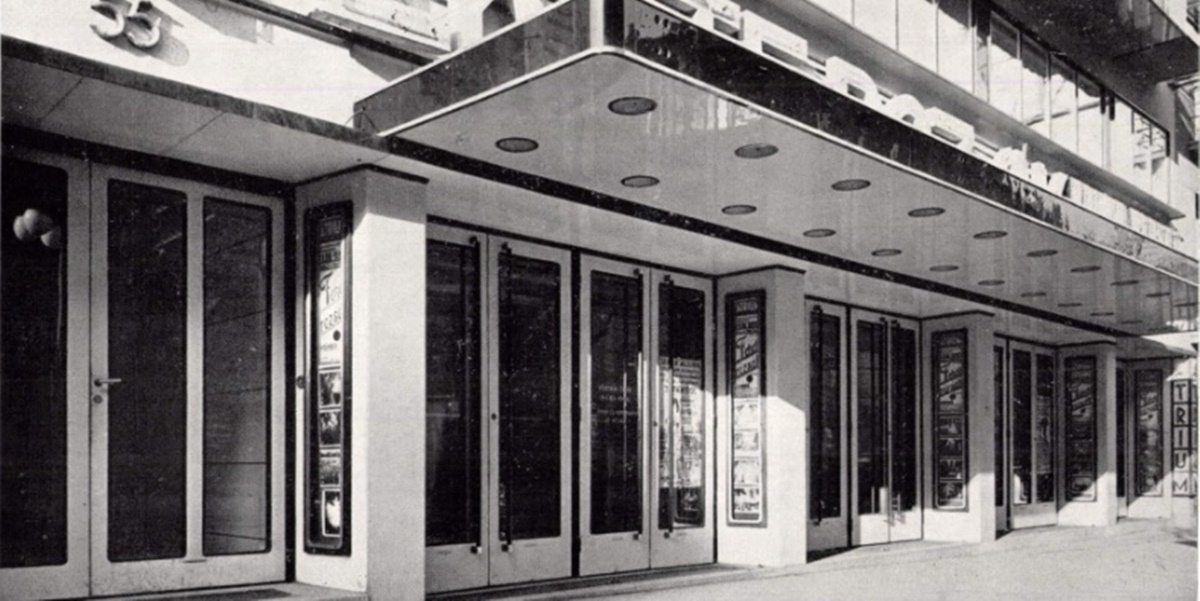
The entrance to the cinema in 1936 (Tér és Forma, 1936. iss. 5–6)
The seven-storey building was designed by the Architect Lajos Kozma but not by himself. The structure is based on an iron frame, onto which the facade was built.
Every detail of the 800-seat balconied auditorium was planned meticulously. The 5–6 issue of Tér és Forma in 1936 wrote:
"The impression of the space is defined by the enormous skylight-like opening with a silver trim and the meeting of wall and ceiling defined by the laws of acoustics and the solemn red fabric wallpaper that covers everything in a unifying colour. Everything is dark during the screening; everything is swallowed by the red darkness; only the projected image is illuminated. Beyond these two elements, there is a third factor that defines the space. The ventilation ring which could be called The Milky Way. The 1600 metal rings spread out in 7 rings and decorate the space with their tectonic placement. The seamless meeting of wall and ceiling highlight the rings of clean air."
The ventilation system caused a minor scandal. Cinemas were required to use Hungarian equipment. Despite this, the cinema asked for offers from both the German AEG and the Hungarian Ventilation Company. To avoid braking the law, AEG negotiated with the Hungarian company and made a more expensive offer, which was accepted despite the price difference. As AEG did not manufacture ventilation equipment in Hungary, it simply commissioned the Hungarian company to build the system. The strange deal did not remain a secret and was described in detail as an example not to be followed on the "Dark pages of Hungarian Industry" in the periodical Honi Ipar in October 1935.
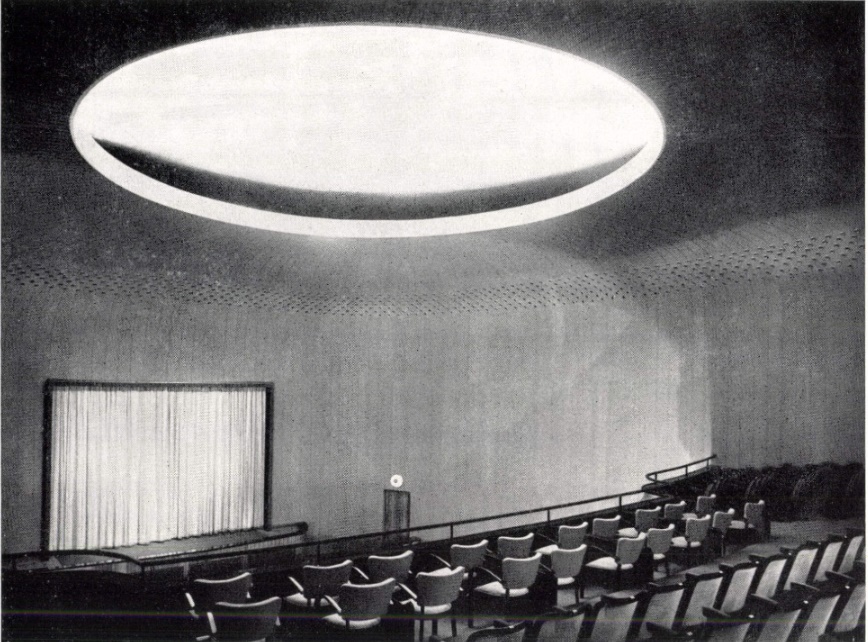
The unique ceiling and rows of seats on the balcony (Photo: Tér és Forma, 1936, iss. 5–6)
On the other hand, the sound system received widespread praise. The Hungarian-made speakers performed well, and the cinema was the first to consider the acoustic requirements of sound films, which differed from those of previously built theatres.
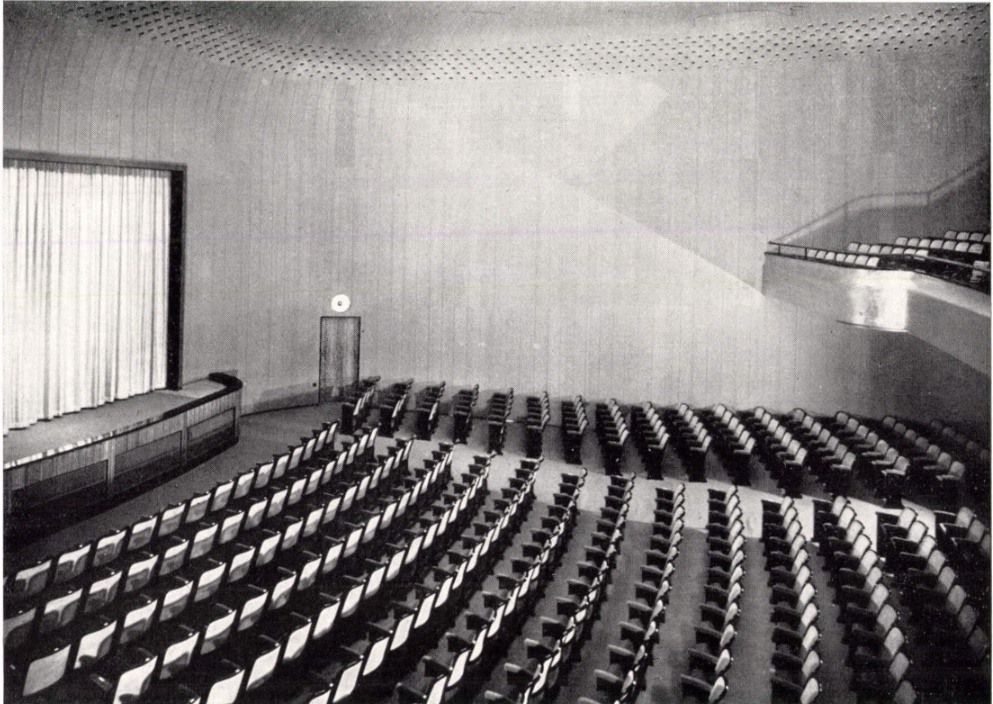
The auditorium and the screen. Originally the building had no stage, it was added in 1947 (Photo: Tér és Forma, 1936, iss. 5–6)
Contrary to earlier practice, a joint-stock company, Atrium Filmszínház Rt., was established to operate the cinema. Previously cinema licences had been granted to private individuals and not legal entities.
The company received the permit with strict rules; for example, they were required to donate 50 pengős each to 200 disabled people. The largest shareholder was József Pesthy Müller. The owner of a soap factory was also involved in running IBUSZ Rt., was a member of the municipal board, and also served as the Consul General of Lithuania in Budapest.
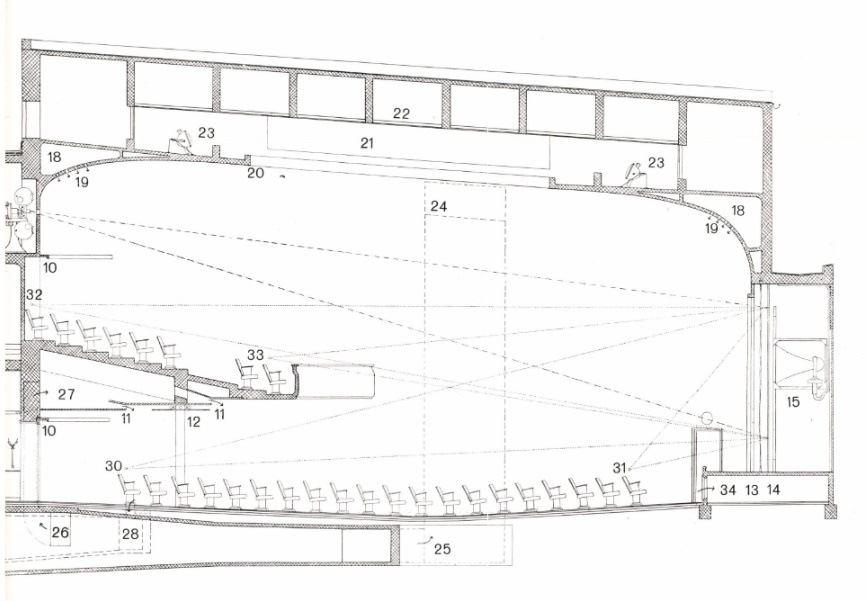
Longitudinal section of the cinema (Photo: Tér és Forma, 1936, iss. 5–6)
The cinema opened on 26 October 1935. It was intended to operate as a premier cinema, which was the first to show films. They took this so seriously that they even went to court regarding screenings of a German comedy in other cinemas in 1938 because Átrium had the optional right to screen it first.
The elegant art deco cinema sadly did not operate for long. The building was hit by several bombs during the war and served as a temporary slaughterhouse during the siege.
The reconstruction lasted until 1947, and a stage was installed in the process. The cinema was reopened on 14 March 1947 under the átrium name. A one-time performance with folk songs, a celebratory speech and poems recited by Hilda Gobbi was given. The celebratory speech was given by Sándor Nógrádi, the President of the Hungarian Association of Partisans. As the time social organisations were responsible for operating cinemas, and Átrium was overseen by Nógrádi.
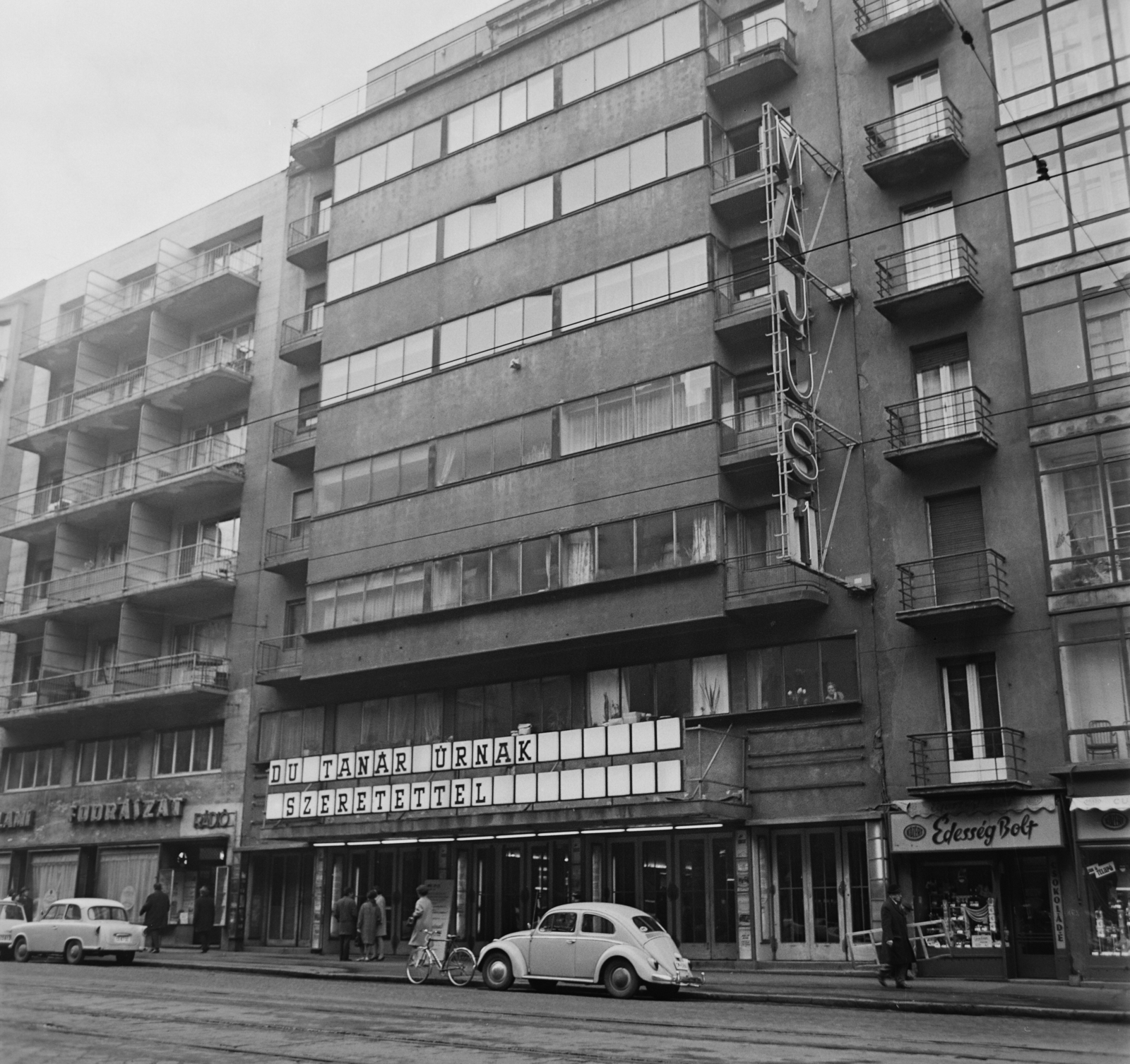
The Május 1 mozi ('1 May Cinema') in 1969 (Photo: Fortepan/No.: 126635)
The screening began after the celebratory programme. First, the MAFIRT Chronicle, i.e. the newsreel, was run, followed by a musical Soviet film about the Alexandrov ensemble, followed by the British film entitled Tehran.
The cinema was nationalised in 1950 and operated under as the Május 1. (1 May) cinema until 1990. It was renovated in the 1980s and was again called Átrium between 1990 and 2001. Similarly to other big cinemas around Budapest, it could not compete with the multiplexes that opened in shopping centres and closed.
Fortunately, it did not suffer the same fate as its contemporary, Buda's other big cinema, the Bartók, where a parking garage now fills what was once the auditorium. It was bought by four private individuals in 2012 and reopened as a theatre.
Cover photo: The cinema and the facade of the house (Photo: Tér és Forma, 1936, iss. 5–6)

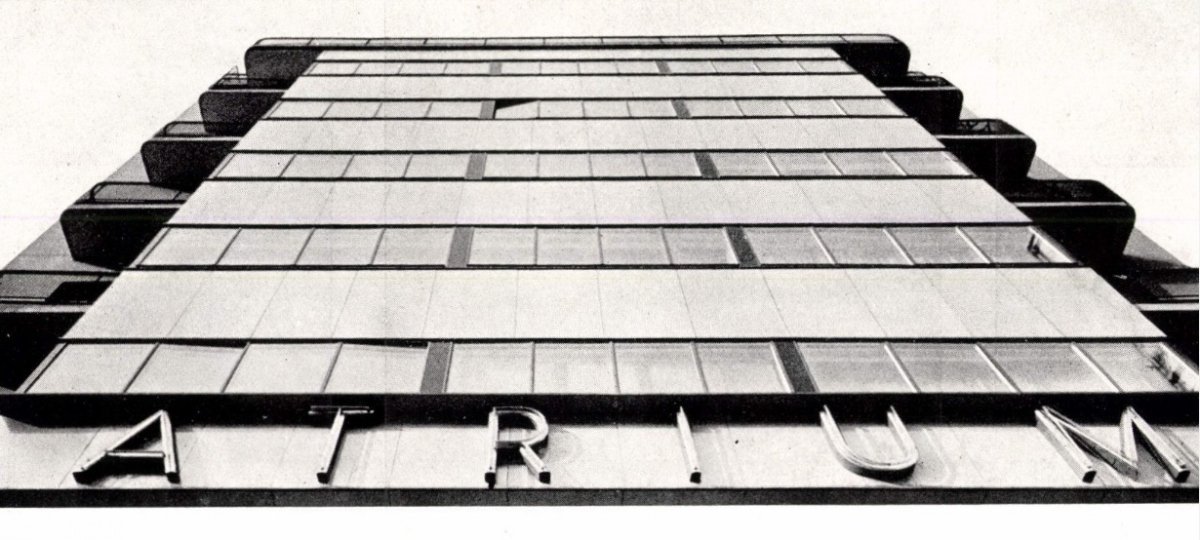



































Hozzászólások
Log in or register to comment!
Login Registration